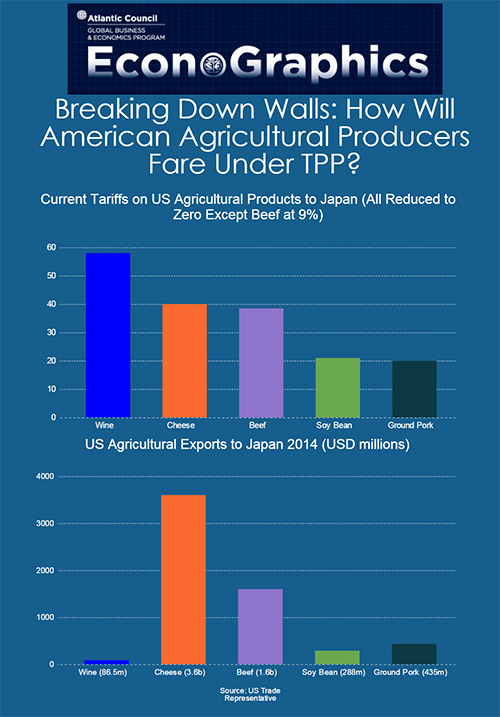On October 5th, Trans-Pacific Partnership (TPP) trade negotiations were concluded in Atlanta. The deal faced criticism from some on a lack of transparency, but details are now beginning to emerge on the settlement. Even with TPP’s lack of transparency, there were clear tension points between negotiators on topics such as biologics, dairy products, and rules of origin for the automaking industry. This week’s Econographic looks specifically at one of the potential winners of the trade deal, the American agricultural sector.

Looking at these rates, it is clear the Japanese agricultural sector has historically been cushioned by highly protectionist policies. The United States rarely holds tariffs over ten percent on products entering its market, but American products looking to enter the Japanese market (highlighted on this week’s graph) consistently faced tariffs of over twenty percent. The reductions under TPP will allow US producers much greater access to the world’s third largest economy. For example, American wine producers previously faced a fifty six percent tariff, making their product significantly less competitive. With this number reduced to zero, California wine companies should be thrilled. American cheese exports to Japan are already at 3.6 billion, the tariff reduction of forty percent will greatly increase profits. It is often difficult to predict the future trajectory of trade deals however, this graph shows that there are significant growth potentials for many American agricultural sectors.
